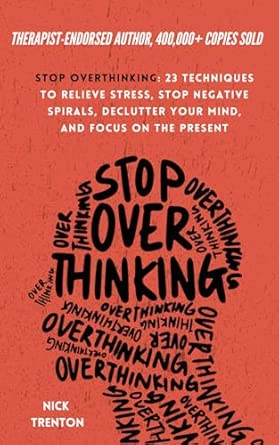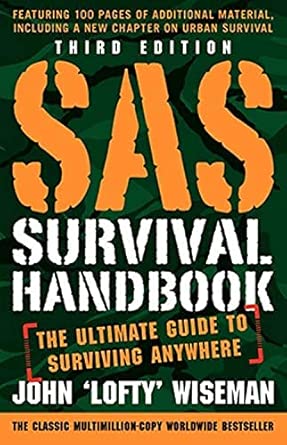Mastering Your Mind: Psychological Tactics for Handling Extreme Stress and Fear in Survival Situations

Mastering Your Mind: Psychological Tactics for Handling Extreme Stress and Fear in Survival Situations
Recognizing and Understanding Stress Responses
What Happens to Your Body Under Stress
When faced with a survival situation, your body triggers a stress response, commonly known as the fight-or-flight response. This physiological reaction involves a surge of adrenaline and cortisol, preparing your body to either confront the threat or flee from it. While this response can provide the necessary energy and alertness for immediate action, prolonged stress can lead to mental and physical exhaustion. This impairs your ability to think clearly and make rational decisions.
Why Managing Stress is Crucial in Survival
Managing stress is not just about feeling better; it’s about ensuring your survival. High stress levels can cloud your judgment, reduce your problem-solving abilities, and even lead to panic. By learning to control your stress response, you can preserve your mental clarity, maintain a positive attitude, and make strategic decisions that could save your life.
Common Stress Triggers in Survival Situations
Stress triggers in survival situations can range from environmental conditions to psychological pressures. Examples include:
- Extreme cold or heat
- Lack of water
- Isolation
- Fear of the unknown
- The realization of being lost
Recognizing these triggers is the first step towards managing your stress levels effectively.
Building a Mental Resilience Toolbox
Developing a Positive Mental Attitude
A positive mental attitude is your most powerful tool in a survival situation. It involves maintaining hope, focusing on your goals, and believing in your ability to overcome challenges. This mindset can significantly impact your stress levels and decision-making processes, making it easier to find solutions and stay motivated.
Techniques for Stress Reduction
Several techniques can help reduce stress, including:
- Deep breathing exercises
- Visualization
- Mindfulness
Practicing these techniques regularly can help you stay calm and focused, even under extreme conditions. It’s about training your mind to respond differently to stress, turning potential panic into productive actions.
The Role of Physical Exercise
Physical exercise not only keeps your body strong but also has a profound effect on your mental health. Regular exercise can reduce the effects of stress, improve your mood, and increase your overall resilience. Simple exercises, even in confined spaces, can help maintain your physical and mental well-being in survival situations.
Practical Strategies for Handling Fear
Identifying and Acknowledging Your Fears
The first step in handling fear is to identify and acknowledge it. Fear is a natural response to threatening situations, but it becomes problematic when it paralyzes you. By recognizing your fears, you can start to address them rationally, rather than letting them control your actions.
Breathing and Mindfulness Techniques
Breathing techniques, such as deep breathing or the 4-7-8 method, can be incredibly effective in managing fear. These methods help slow down your heart rate and reduce anxiety, allowing you to think more clearly. Mindfulness and meditation can also aid in distancing yourself from your fears, focusing on the present, and reducing panic.
Creating a Plan of Action
Having a plan of action can significantly reduce fear. When you’re prepared for various scenarios, fear of the unknown diminishes. Start by assessing your situation, identify your resources, and develop a step-by-step plan. This approach not only keeps your mind occupied but also gives you a sense of control over your situation.
Leveraging Routine to Anchor Your Mind
Establishing Daily Routines
When you’re thrust into a survival situation, the absence of your normal daily structure can amplify stress and fear. Establishing a new routine in this unfamiliar environment is a powerful way to regain a sense of normalcy and control. Start by setting specific times for waking up, eating, exercising, and sleeping. This structure not only helps manage stress but also ensures you’re attending to your physical needs, which is crucial for maintaining strength and mental clarity.
Importance of Sleep Cycles
Sleep might seem like a luxury in survival situations, but it’s a critical component of stress management and decision-making. Lack of sleep can significantly impair your cognitive functions, making it harder to solve problems and make decisions. Establishing a regular sleep cycle, even in the most challenging environments, helps your body and mind recover, ensuring you’re better equipped to handle the stresses of the next day.
Nurturing Social Connections
The Power of Teamwork
If you’re not alone, leveraging the power of teamwork is vital. Working together not only distributes the workload but also provides emotional support, helping mitigate the effects of stress and fear. Discuss plans, share tasks, and ensure everyone has a role that contributes to the group’s overall survival. This collaboration fosters a sense of community and purpose, crucial for mental resilience in extreme situations.
Communication as a Stress Reliever
Effective communication within a group can significantly reduce stress and fear. It’s important to express concerns, share feelings, and listen actively. This open dialogue helps identify potential problems early and find solutions together. Moreover, talking about fears and stresses with others can provide new perspectives and coping strategies, reinforcing the group’s cohesion and resilience.
Embracing Nature’s Therapeutic Effects
The Healing Power of Nature
Engaging with the natural environment can have a profound calming effect, helping reduce stress and fear. Activities like listening to running water, watching wildlife, or simply sitting under a tree can provide a mental break from the survival situation. This connection to nature can remind you of the beauty and tranquility that exists beyond your immediate challenges, offering a sense of peace and hope.
Physical Interaction with the Environment
Beyond passive observation, physically interacting with your surroundings through tasks like building a shelter, gathering food, or navigating terrain can also have therapeutic effects. These activities not only contribute to your survival but also provide a sense of achievement and purpose. The physical exertion involved can help release stress, while the focus required can distract from fears and anxieties, anchoring your mind in the present.
As we’ve explored these psychological tactics for managing stress and fear, it’s clear that the mind’s power is an invaluable asset in survival situations. By establishing routines, nurturing social connections, and embracing nature’s therapeutic effects, you can significantly bolster your mental resilience. These strategies not only help navigate the challenges of the present but also prepare you for the uncertainties of the future.
Advanced Coping Mechanisms for Prolonged Survival Situations
Prioritizing Tasks Under Pressure
When the initial shock of a survival situation wears off, prioritizing tasks becomes crucial for maintaining mental health and ensuring long-term survival. The key is to distinguish between what needs immediate attention and what can wait. For example, securing water and shelter is paramount, whereas worrying about long-term food sources can come later. This approach prevents overwhelm and keeps you focused on immediate, life-sustaining actions.
Harnessing the Power of Routine in Chaos
In the chaos of survival, establishing a routine that includes moments of leisure or relaxation can seem counterintuitive. However, these moments can significantly reduce stress levels and improve overall mental health. Something as simple as dedicating time to watch the sunset or journaling can provide a sense of normalcy and peace amidst turmoil.
Cognitive Restructuring Techniques
Cognitive restructuring is a method used to challenge and change irrational beliefs and replace them with more positive and productive thoughts. In survival situations, fear and stress can distort thinking, making you more pessimistic or leading you to underestimate your abilities. By actively identifying these negative thoughts and questioning their validity, you can shift your mindset to a more constructive and hopeful outlook.
Expert Tips for Long-Term Resilience
Building a Support System
Even if physically alone, creating a psychological support system is possible and beneficial. This can be achieved through remembering loved ones, reflecting on words of encouragement, or drawing strength from personal heroes. These mental exercises can provide comfort and a sense of being supported, which is vital for mental endurance in isolation.
Advanced Mindfulness and Meditation Techniques
While basic mindfulness can help manage immediate stress, advanced techniques such as focused attention meditation or loving-kindness meditation can offer deeper psychological benefits. These practices not only aid in stress reduction but also promote feelings of connection to others and enhance overall well-being, which is crucial for long-term survival scenarios.
Adaptive Problem-Solving Skills
Survival situations require a dynamic approach to problem-solving. This means being able to adapt your plans based on changing conditions and available resources. Developing adaptive problem-solving skills involves practicing scenario-based planning, where you imagine various outcomes and strategize accordingly. This mental flexibility can be a significant asset in unpredictable environments.
Putting It All Together
Integration of Survival Skills and Mental Resilience
The ultimate key to surviving extreme stress and fear is the integration of practical survival skills with mental resilience strategies. This holistic approach ensures that while you’re physically prepared to face survival challenges, you’re also mentally equipped to handle the psychological toll such situations can exert.
Next Steps for Continuous Preparedness
Continuous preparation involves both physical and mental training. Engage in regular physical activities that simulate survival scenarios, such as camping or hiking, to build physical endurance and practical skills. Simultaneously, practice the mental resilience techniques discussed, from mindfulness to cognitive restructuring, to strengthen your psychological preparedness. Lastly, always seek to learn and adapt-survival is as much about learning from each experience as it is about the immediate response to it.
Having just explored how your body responds to stress, you’re probably thinking about practical ways to manage and mitigate these reactions. Products like “Stop Overthinking: 23 Techniques to Relieve Stress, Stop Negative Spirals, Declutter Your Mind, and Focus on the Present” and “SAS Survival Handbook, Third Edition: The Ultimate Guide to Surviving Anywhere” offer different but complementary approaches to understanding and dealing with stress—whether it’s by mastering your mental health or ensuring your physical preparedness.
Deciding between these resources can significantly impact how you approach stress management, tailored to your personal needs and lifestyle. Do you seek to conquer stress through mental strategies and mindfulness, or do you find solace in being physically prepared for any situation? Compar
| Feature / Product | Stop Overthinking: | SAS Survival |
|---|---|---|
 |  | |
| $16.87 | $26.39 | |
| Shop now → | Shop now → |
